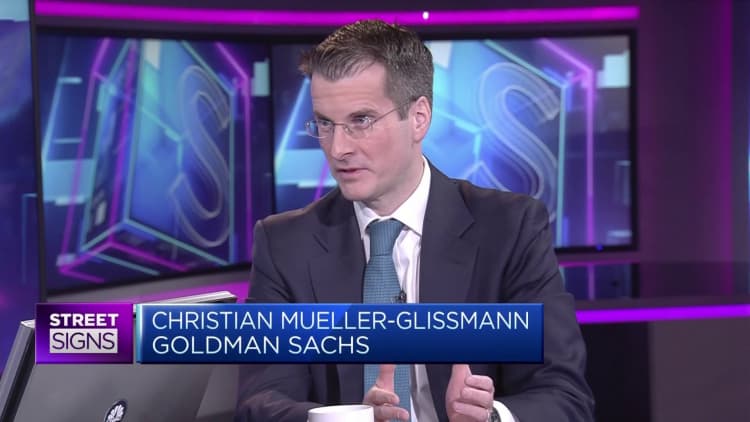
Goldman Sachs still expects stubbornly high U.S. inflation to ease over the coming months, despite investors slashing bets for Federal Reserve interest rate cuts, after yet another print showed that consumer prices remain sticky.
The consumer price index accelerated at a faster-than-expected pace in March, according to data published on Wednesday by the Labor Department’s Bureau of Labor Statistics.
The CPI, a broad measure of goods and services costs across the economy, rose 0.4% for the month, putting the 12-month inflation rate at 3.5%. This was an acceleration from the 3.2% hike jotted in February.
The report roiled investor confidence in the Fed’s rate cut outlook, sent financial markets into retreat and prompted Treasury yields to spike.
Traders now anticipate an initial rate reduction from the U.S. central bank in September, following months of penciling in the June meeting as the likely start of Fed policy easing.
In the Goldman Sachs view, the U.S. CPI will fall back to 2.4% this year, down from the current annualized rate of 3.5%.
“The problem is that you have certain parts of the inflation bucket right now that are continuing to push things up,” Christian Mueller-Glissmann, head of asset allocation research at Goldman Sachs, told CNBC’s “Street Signs Europe” on Thursday.
“In the last print, it was the transportation. We obviously have oil prices currently going up, and that’s certainly something that has been a bit stronger than what we initially anticipated,” Mueller-Glissmann said.
He added that the inflationary impact of rising oil prices will likely be limited, because the bank expects that the Organization of the Petroleum Exporting Countries will eventually bring spare capacity online.
Gas prices are displayed at a gas station on March 12, 2024 in Chicago, Illinois.
Scott Olson | Getty Images
Mueller-Glissmann said that the normalization of wage inflation was one of the core reasons why Goldman expects U.S. inflation to fall. On this point, he conceded that there were “more question marks” for the U.S. compared to Europe, when it comes to wage normalization.
“But we would still argue that a lot of the higher frequency indicators of job openings, for example, in the U.S., they are coming down. So, the labor market is still cooling so one would hope that would let wage inflation ease a bit.”
‘Reflation flirtation’
Last month, the U.S. central bank left interest rates unchanged for the fifth consecutive time, in line with expectations, and kept its benchmark overnight borrowing rate in a range between 5.25%-5.5%. At the time, the Fed also said that it still expects three quarter-percentage point cuts by the end of the year.
The March CPI report has fueled concerns that inflation is proving sticker than previously anticipated and appears to have reaffirmed the cautious tone of some Fed policymakers in recent weeks.
Speaking late last month, Fed Governor Christopher Waller said that there was “no rush” to cut the U.S central bank’s policy rate to normalize policy.
Separately, Atlanta Federal Reserve bank President Raphael Bostic has said that he now expects just one single quarter-point rate cut this year, compared with the two trims that he had previously projected.
“We shifted from a Goldilocks optimism in the fourth quarter to this reflation flirtation since the beginning of the year, and I think, so far so good. I think markets have dealt really well with that shift from inflation coming down and a lot of rate cuts coming to now inflation actually staying sticky, and [to] rate cuts being pushed out,” Mueller-Glissmann said.
A key reason for why that has been the case, Mueller-Glissmann said, “has obviously been growth.”
“I think this reflation flirtation is not just about inflation, it is about growth as well, and the growth has actually been remarkably good. And I’m talking about both the corporate sector, especially in the U.S. [where] the earnings have been good, but also the manufacturing sector, which has started to the recover — and the consumer,” he added.
“It really matters if we get the growth to continue to be good.”
— CNBC’s Jeff Cox contributed to this report.

